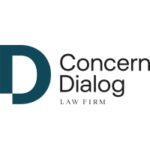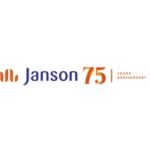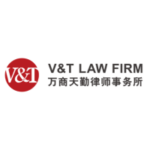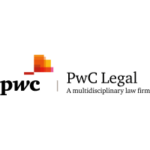-
What are the main methods of resolving disputes in your jurisdiction?
In Malaysia, the main methods of resolving disputes are by way of court litigation and alternative dispute resolution through arbitration, mediation and adjudication.
Court litigation is based on an adversarial model. Depending on the nature of the claim, evidence is led orally through witnesses or affidavits. Legal arguments are made by Counsel to assist the Court with the assessment and determination of the claim. The claimant, referred to as the plaintiff, bears the legal burden to prove the plaintiff’s claim against the party being sued, referred to as defendant.
Arbitration is an alternative dispute resolution mechanism commonly used for commercial agreements. The disputing parties must agree for the disputes arising from the agreement between the parties to be determined by way of arbitration. Arbitration is primarily governed by the Arbitration Act, 2005, which applies to both international and domestic arbitration. Procedurally, arbitration related proceedings are governed by Order 69 of the Rules of Court, 2012. An award by the arbitral tribunal is final and binding and can only be set aside by the Court in limited circumstances provided in Section 37 of the Arbitration Act, 2005. There are several institutions that provide administrative support and facilities for arbitration proceedings, including the Asian International Arbitration Centre (‘AIAC’) (previously known as the Kuala Lumpur Regional Centre for Arbitration), the Malaysian Institute of Arbitrations (‘MIArb’), and the Asian Institute of Alternative Dispute Resolution (‘AIADR’).
By contrast, mediation is a voluntary alternative dispute resolution mechanism led by a third party mediator. The role of the mediator is essentially to facilitate communications and negotiations between the disputing parties to reach an amicable settlement. The Malaysian International Mediation Centre (‘MIMC’) under the auspices of the Malaysian Bar offers mediation services provided by mediators accredited and appointed by MIMC. It is also increasingly common for the Court to refer the disputing parties to court assisted mediation, usually at the early stage of Court litigation, to explore the possibility of resolving the litigation amicably. In such instance, the dispute will be mediated by a Court officer or a Judge, as the case may be, not assigned to the Court presiding over the litigation. All communications during the Court assisted mediation process are intended to be private and confidential and on a without prejudice basis.
Adjudication is commonly used for construction disputes. Adjudication operates on a ‘pay now, argue later’ principle to facilitate continuing implementation of a contract that has reached an impasse. Adjudication is primarily governed by the Construction Industry Payment and Adjudication Act, 2012.
-
What are the main procedural rules governing litigation in your jurisdiction?
The main procedural rules governing litigation are the Rules of Court, 2012, the Rules of the Court of Appeal, 1994 and the Rules of the Federal Court, 1995, depending on which Court has conduct of the litigation.
The Rules of Court, 2012 governs proceedings in the High Court and the subordinate Courts, comprising of the Sessions Court and the Magistrates Court. The Sessions Court and Magistrates Court are Courts of first instance. Depending on the nature of the proceedings, the High Court sits as Court of first instance and appellate Court for claims originating from the subordinate courts.
Proceedings in the Court of Appeal is primarily governed by the Rules of the Court of Appeal,1994. Proceedings in the Federal Court is primarily governed by the Rules of the Federal Court, 1995.
-
What is the structure and organisation of local courts dealing with claims in your jurisdiction? What is the final court of appeal?
The court system in Malaysia is hierarchical. The courts, in ascending order of authority, are the Magistrates Court, the Sessions Court, the High Court, the Court of Appeal and the Federal Court.
Our court system is based on a three-tier system, in that save for claims for matters of constitutional importance , the claim will commence and be determined by the court of first instance, followed by an appeal, usually as of right, to the appellate court, and a further appeal to the apex court is subject to leave to appeal being granted by the apex court.
The Magistrates Court has jurisdiction over civil claims valued at between Ringgit Malaysia 5,000 to 100,000 whereas the Sessions Court has jurisdiction over civil claims valued at between Ringgit Malaysia 100,001 to 1,000,000. For claims originating from the subordinate courts, namely the Magistrates Court and the Sessions Court, an aggrieved party may file an appeal against the decision of the subordinate court, be it from the Magistrates Court or Sessions Court, to the High Court. In the event a party is aggrieved with the outcome of the appeal in the High Court, the aggrieved party may apply for leave to appeal to the Court of Appeal and if leave is granted, appeal to the Court of Appeal as the final court.
The High Court has original jurisdiction over civil claims valued in excess of Ringgit Malaysia 1,000,000. There are 2 High Courts of coordinate jurisdictions, namely the High Court of Malaya and the High Court of Sabah and Sarawak. For claims originating from the High Court, an aggrieved party may file an appeal, usually as of right, against the decision of the High Court to the Court of Appeal. In the event a party is aggrieved with the outcome of the appeal in the Court of Appeal, the aggrieved party may apply for leave to appeal to the Federal Court and if leave is granted, appeal to the Federal Court as the final court.
-
How long does it typically take from commencing proceedings to get to trial in your jurisdiction?
Typically, the time frame from commencement of proceedings is as follows:
- After due service of the writ of summons and statement of claim by the plaintiff on the defendant, a defendant is required to enter an appearance within fourteen (14) days after the date of service (Order 12 rule 4 of the Rules of Court, 2012 and Rules of Court (Amendment) 2023 (P.U.(A) 229)).
- Within fourteen (14) days after the deadline for entering appearance, the defendant must file a defence and counterclaim, if applicable (Order 18 rule 2(1) of the Rules of Court, 2012).
- Within fourteen (14) days from the date of receipt of the defence (and counterclaim, if applicable), the plaintiff must file a reply to defence (and defence to counterclaim, if applicable) (Order 18 rule 3(4) of the Rules of Court, 2012).
- Pleadings are deemed closed at the expiration of fourteen (14) days after service of reply to defence is filed and served, or if there is no reply to defence but only defence to a counterclaim, after service of defence to a counterclaim (Order 18 rule 20 of the Rules of Court, 2012).
- After the close of pleadings, in the event the claim is suitable to proceed to trial and subject to any interlocutory applications, the court will give pre-trial directions at the case management and fix trial dates. Trial dates are dependent on the availability of the Court and Counsel and usually fixed within eight (8) to fifteen (15) months from commencement of proceedings. The number of days would depend on the number of witnesses and the documents involved.
- After the evidence is concluded at trial, the court will direct parties to file transcribed notes of proceedings and written submissions. Typically, the parties are given two (2) to three (3) months for the filing and exchange of notes of proceedings and written submissions and reply, if applicable.
- The court may fix a hearing date for oral submissions after the filing and exchange of written submissions and reply, if applicable.
- While there is no fixed timeline within which a decision must be delivered by the Court, a decision is typically delivered within two (2) to three (3) months after oral submissions.
-
Are hearings held in public and are documents filed at court available to the public in your jurisdiction? Are there any exceptions?
Depending on the nature of proceedings, proceedings may either be heard in Chambers or in open Court. Hearings of interlocutory applications and administrative case managements are usually conducted in Chambers attended only by Counsel. Trials are conducted in open Court and may be attended by members of the public, unless there is an order of Court limiting or barring Court attendance. Such order may be made in cases involving minors or if the court is satisfied that this would be in the interests of justice, public safety or public security (Section 15(1) of the Courts of Judicature Act, 1964).
In civil proceedings, unless there is an order of Court barring disclosure, court filings and proceedings are accessible by the public. Once a document is filed, the document is generally considered a public document and is searchable through the Court’s electronic filing system (commonly known as the ‘Court’s EFS system’), subject to the payment of a nominal Court fee.
If a party wishes court filings or proceedings to be kept confidential, an application for a protective order or an order barring or limiting access may be made. In respect of documents, the court may inspect the documents on a confidential basis in order to decide whether a protective order should be granted. In certain instances, if parts of the document contain confidential information not relevant to the claim, the court may order those parts to be redacted instead. See Tokai Corporation v DKSH Malaysia Sdn Bhd [2016] MLJU 621.
-
What, if any, are the relevant limitation periods in your jurisdiction?
The Limitation Act, 1953 prescribes the following limitation periods in Malaysia:
- In respect of actions in contract and in tort, an aggrieved party has six (6) years from the date of the contractual breach or tortious act to initiate legal proceedings. See Section 6(1) of the Limitation Act, 1953.
- In respect of actions to recover land, an aggrieved party has twelve (12) years from the date of right of action accrues to bring a claim to recover land. See Section 9 of the Limitation Act, 1953.
- In respect of actions to recover trust property in respect of a breach of trust, an aggrieved party has six (6) years from the date the right of action accrues to initiate legal proceedings for recovery of trust property due to a breach of trust. See Section 22(2) of the Limitation Act, 1953.
- There is no limitation period for actions relating to fraud or fraudulent breach of trust, or to recover trust property or the proceeds thereof from a trustee. See Section 22(1) of the Limitation Act, 1953.
- In respect of actions to enforce court judgment, a judgment creditor has twelve (12) years from the date of the right to enforce the court judgment accrues to take legal steps to enforce the judgment. See Section 6(3) of the Limitation Act, 1953.
- In respect of actions to enforce arbitral awards, a party has six (6) years from the date the right to enforce arbitral award accrues to initiate legal proceedings to enforce the award. See Section 6(1)(c) of the Limitation Act, 1953.
- In respect of civil suits filed against the government, the limitation period is thirty-six (36) months from the date of the act, neglect or default, or the cessation of a continuing injury or damage. See section 2 of the Public Authorities Protection Act, 1984.
The Limitation (Amendment) Act, 2018 recognises that the limitation period may be postponed in instances where:
- there has been concealment of fraud or mistake. Time starts to run from the date of discovery of the fraud or mistake (Section 29(1) of the Limitation Act, 1953); and
- the damage was not discoverable before the expiry of six years in an action for negligence. Time will be extended by three years from the date of discovery with no action being possible 15 years after the date the damage occurred (Section 6(A) of the Limitation Act, 1953).
-
What, if any, are the pre-action conduct requirements in your jurisdiction and what, if any, are the consequences of non-compliance?
Generally, the Malaysian Rules of Court, 2012 do not impose any mandatory requirements on pre-action conduct prior to the commencement of proceedings. While it is common practice for a party to issue a demand to the adverse party prior to commencement of proceedings, this is usually undertaken as a matter of practice and not as a pre-action requirement. If, however a pre-action demand is expressly required in a contract, this must be followed. A failure to comply with such requirement may render the commencement of the claim premature and hence, irregular and liable to struck out.
There are however statutory prerequisites to be complied with in specific instances. These include, but are not limited to:
- The issuance of a statutory notice of demand before commencing proceedings to wind up a company (Section 466(1)(a) of the Malaysian Companies Act, 2016);
- The issuance of a bankruptcy notice to an individual before commencing bankruptcy proceedings (Section 3 of the Insolvency Act, 1967); and
- The application for and grant of leave to commence a derivative action.
Failure to comply with the statutory prerequisites may render the claim liable to be struck out by the Court on the basis of procedural irregularity.
-
How are proceedings commenced in your jurisdiction? Is service necessary and, if so, is this done by the court (or its agent) or by the parties?
In Malaysia, court proceedings are commenced by filing either a writ of summons with a statement of claim or an originating summons with an affidavit, depending on the nature of the proceedings. A writ action is suitable for civil claims involving serious dispute as to facts while an originating summons procedure is suitable for civil claims where the underlying facts are not disputed such as disputes on points of law or on interpretation of document or contract.
Service of the originating process is necessary and is the responsibility of the plaintiff. The originating process is to be served on an individual defendant personally or at his last known address by prepaid advice of receipt registered post or in such manner as stipulated under the contract (Order 62 rule 3 of the Rules of Court, 2012). Where a defendant is a corporation, service may be effected by leaving a copy of the originating process at the registered office of the corporation; by sending a copy of it by registered post addressed to the corporation at the office or by handing a copy of it to the secretary or to any director or other officer of the corporation (Order 62 rule 4 of the Rules of Court, 2012). Service may be effected by way of substituted service with leave of court.
Where a defendant is out of jurisdiction, the originating process may be served out of jurisdiction with leave of court. In order for the court to grant leave to effect service out of jurisdiction, the plaintiff must show, among others, that he has a good arguable case falling within the circumstances set out in Order 11 rules 1 and 2 of the Rules of Court, 2012. See Joseph Paulus Lantip & Ors v Unilever PLC [2012] 7 CLJ 693. Once leave to effect service out of jurisdiction is granted by the Malaysian court, service may be effected by the plaintiff’s agent in the country where the defendant is or probably may be found, through the judicial authority of that country or the Malaysian consular authority in that country, in accordance with the law of that country.
-
How does the court determine whether it has jurisdiction over a claim in your jurisdiction?
The governing provision in determining whether the Malaysian Court has jurisdiction over a claim is Section 23 of the Courts of Judicature Act, 1964. Based on Section 23 of the Courts of Judicature Act, 1964, the Malaysian Court has jurisdiction to try all civil proceedings if Malaysia is where the cause of action arose, or where the defendant resides or has his place of business, or where the facts of proceedings are based exist or are alleged to have occurred.
-
How does the court determine which law governs the claims in your jurisdiction?
Subject to the Malaysian Court having jurisdiction over the claim, where the disputing parties have agreed on the governing law for the disputes, the Courts will hear and determine the dispute based on the agreed governing law (James Capel (Far East) Ltd v YK Fung Securities Sdn Bhd (Tan Koon Swan, Third Party) [1996] 2 MLJ 97).
In the absence of an agreed governing law provision between the disputing parties, the court will have to ascertain if there is an implied choice by reference to the terms or form of contract or surrounding circumstances of the claim. Factors such as (a) the presence of a choice of forum clause; (b) the use of a terminology or concept peculiar to a system of law; (c) where one party to a contract is government; and (d) both sides carry on business or live in the same country may be relevant. While none of these factors on its own are conclusive; a combination of factors may strengthen or weaken a finding of implied choice, as the case may be (James Capel (Far East) Ltd v YK Fung Securities Sdn Bhd (Tan Koon Swan, Third Party) [1996] 2 MLJ 97).
If the court is not in a position to find an implied choice by reference to the terms or forms of contract or surrounding circumstances, then the court adopts the system of law with which the transaction has the closest and most real connection. Examples of this are: (a) the place of performance of the contract; (b) the place where the contract was made; (c) the links of the parties of the contract to any particular countries; (d) the site of the immovable property if such property is involved; and (e) the currency in which money under the contract is expressed (James Capel (Far East) Ltd v YK Fung Securities Sdn Bhd (Tan Koon Swan, Third Party) [1996] 2 MLJ 97). In implementing this approach of the closest and most real connection, the best test is the ‘localization’ or ‘centre of gravity’ approach (James Capel (Far East) Ltd v YK Fung Securities Sdn Bhd (Tan Koon Swan, Third Party) [1996] 2 MLJ 97). This approach means the claim will be decided based on the law of the country where there is a clear preponderance of such factors.
-
In what circumstances, if any, can claims be disposed of without a full trial in your jurisdiction?
As far as the plaintiff is concerned, assuming that the defendant enters an appearance to defend the claim, a claim can be disposed of without a full trial by the summary judgment procedure. On the application of the plaintiff, the Court may grant summary judgment against the defendant if there is no bona fide defence and no triable issue. The plaintiff may also apply for the defence or part of the defence to be struck out under Order 18 rule 19 of the Rules of Court, 2012 on the ground that the defence discloses no reasonable defence, or is scandalous, frivolous or vexatious, or it may prejudice, embarrass or delay the fair trial of the claim or it is an abuse of process of the Court and if applicable, enter judgment against the defendant.
As far as the defendant is concerned, a defendant may apply to strike out the plaintiff’s claim or part of the claim under Order 18 rule 19 of the Rules of Court, 2012 on the ground that the claim discloses no reasonable cause of action, or is scandalous, frivolous or vexatious, or it may prejudice, embarrass or delay the fair trial of the claim or it is an abuse of process of the Court and if applicable, strike out the plaintiff’s claim.
The Court or either party may also apply for disposal of points of law or construction of documents without full trial under Order 14A of the Rules of Court, 2012 or trial of specific issue or fact under Order 33 rule 2 of the Rules of Court, 2012.
-
What, if any, are the main types of interim remedies available in your jurisdiction?
Interim applications help manage the litigation process, protect rights, and ensure efficient justice before the substantive hearing. Some of the key remedies that litigants may seek through interim applications include:
- Interim Injunction: Various interim injunctions can be sought to preserve status quo of a matter or property pending resolution of the claim.
- Summary Judgment: Allows a judgment based on documentary evidence without a full trial when there is no triable issue.
- Striking Out: Seeks to dismiss a claim summarily if it is obviously unsustainable in fact and/or
- Security for Costs: Requires a party to provide security for the opposing party’s legal costs.
- Discovery and Production of Documents: Requests the court to order the disclosure of relevant documents.
-
After a claim has been commenced, what written documents must (or can) the parties submit in your jurisdiction? What is the usual timetable?
After a claim is initiated and served upon the defendant, the defendant must enter an appearance within fourteen (14) days and file and serve a defence (and counterclaim, if necessary) within fourteen (14) days of the appearance deadline (i.e., twenty-eight (28) days from service of the claim). The plaintiff must file and serve a reply to the defence (and a defence to the counterclaim, if necessary) within fourteen (14) days of receiving the defence. Typically, within two months from the close of pleadings, the parties must file the following pre-trial documents:-
- Bundle of Pleadings
- Agreed Facts
- Agreed Issues to be Tried
- Common Bundle of Documents
- Plaintiff’s Case Summary
- Defendant’s Case Summary
-
What, if any, are the rules for disclosure of documents in your jurisdiction? Are there any exceptions (e.g. on grounds of privilege, confidentiality or public interest)?
Under the current legal framework, there is no obligation for automatic disclosure in civil proceedings. According to Order 34 rule 2(2) of the Rules of Court 2012, parties must only produce documents they intend to rely on or refer to during the trial. The duty to disclose arises only when, and to the extent that, the court orders the same upon an application made under Order 24 rules 3 and 7. The court has the discretion to order discovery at any point during the proceedings. An applicant who moves the court for discovery must satisfy the court that the requested documents are relevant and either adversely affect his own case, support another party’s case, or adversely affect the other party’s case. Once an order for discovery is made, the obligation to disclose continues until the proceedings conclude.
Order 24 rule 10 of the Rules of Court 2012 allows for the inspection of documents referred to in pleadings and affidavits by way of a notice to produce without a court order.
To comply with this discovery framework, it is crucial to preserve documents pending trial. Destruction of relevant documents can lead to penal consequences under section 204 of the Penal Code. Additionally, intentional suppression or destruction of useful documents can result in an adverse inference being drawn under section 114(g) of the Evidence Act 1950 that the documents would have been unfavourable to the party responsible for their destruction.
Exceptions to disclosure include:
- Attorney-Client Privilege: Section 126 of the Evidence Act 1950 protects communications between a client and their lawyer, including documents given to the lawyer and legal advice received.
- Public Interest: Disclosure can be refused if it is claimed that it would harm the public interest, supported by any law authorizing or requiring the withholding of the document, as per Order 24 rule 15 of the Rules of Court 2012.
The case of Teoh Chong Kean v Yeoh Tai Chuan & Anor [2018] 2 MLJ 669 demonstrates that an injunction can prevent the disclosure of confidential information.
-
How is witness evidence dealt with in your jurisdiction (and in particular, do witnesses give oral and/or written evidence and what, if any, are the rules on cross-examination)? Are depositions permitted?
At trial, a witness typically provides their evidence-in-chief through a previously filed written witness statement, which has been served on all parties. Further oral examination-in-chief is allowed. Subsequently, the witness undergoes oral cross-examination and re-examination, as outlined in Section 138 of the Evidence Act 1950. Hearsay evidence mandates that oral testimony must be direct, meaning the witness must have personally perceived the fact.
Depositions are generally not permitted. However, for foreign proceedings, a witness may be examined before a qualified individual nominated by the applicant and approved by the Registrar or another appropriate person designated by the Court. The examiner sends the witness’s deposition to the Registrar, who then forwards it with a sealed certificate to the Minister or appropriate authority, as per the Civil Procedure Convention, for transmission to the foreign court or tribunal.
-
Is expert evidence permitted in your jurisdiction? If so, how is it dealt with (and in particular, are experts appointed by the court or the parties, and what duties do they owe)?
The evidence of an expert witness is presented in a written report signed by the expert and attached to an affidavit sworn by them, as specified in Order 40A rule 3(1) of the Rules of Court 2012. Like factual witnesses, an expert witness will give their evidence-in-chief and be subject to cross-examination and re-examination.
An expert’s primary duty is to assist the court on matters within their expertise, which takes precedence over any obligation to the party who engaged or compensates them, as highlighted in Batu Kemas Industri Sdn Bhd v Kerajaan Malaysia & Anor [2015] 7 CLJ 849.
Additionally, the court may independently appoint an expert to provide insight on factual or opinion-based questions that do not involve legal interpretation, as stated in Order 40 Rule 1.
-
Can final and interim decisions be appealed in your jurisdiction? If so, to which court(s) and within what timescale?
Levels of Appeal
A party dissatisfied with a court decision can appeal to a higher court either as of right or with leave. Appeals from the Magistrates’ and Sessions Courts go to the High Court, and appeals from the High Court go to the Court of Appeal. Most appeals are as of right, but some require leave. Appeals from the Court of Appeal to the Federal Court always require leave.
The Federal Court also has limited jurisdiction under Rule 137 of the Rules of the Federal Court 1995 to review its own decisions. It can hear civil appeals from the Court of Appeal if leave is granted under Section 96 of the Courts of Judicature Act 1964, provided the appeal concerns:
- A question of general principle decided for the first time, or a significant question warranting further argument and a Federal Court decision for public benefit, or
- A constitutional provision’s effect or the validity of related written law.
Timescales
- Appeal to the High Court: Must be lodged within 14 days of the decision (Order 55 Rule 2, Rules of Court 2012).
- Appeal to the Court of Appeal: Must be lodged within 30 days of the decision (Rule 12, Rules of the Court of Appeal 1994).
- Application for leave to appeal to the Federal Court: Must be filed within 30 days of the decision (Rule 47, Rules of the Federal Court 1995). If leave is granted, the notice of appeal must be filed within the period directed by the Federal Court (Rule 108, Rules of the Federal Court 1995).
Appealing after final decisions
After a full trial, the appellate court will not interfere with the trial judge’s factual findings unless the decision was plainly wrong and could not reasonably be explained or justified (Jade Homes Sdn Bhd v Sivananthan Krishnan [2021] 7 CLJ 487). For other appeals, the decision of the lower court is presumed to involve a correct exercise of discretion, and the appellate court will only intervene if satisfied that the lower court was wrong (Vasudevan v T. Damodaran & Anor [1981] 2 MLJ 150). In exceptional cases, new legal points not raised in the lower court may be introduced with leave if they arise from the existing factual matrix (Keng Soon Finance Bhd v MK Retnam [1989] 1 MLJ 457).
Appeals at the interim stage
For interlocutory applications filed after the close of pleadings, the court will provide directions at case management for filing affidavits and written submissions and will schedule a hearing or decision date. Upon resolution of interlocutory applications, the court will set trial dates.
-
What are the rules governing enforcement of foreign judgments in your jurisdiction?
For a foreign defendant, the plaintiff must establish the court’s jurisdiction over the claim and demonstrate a valid cause of action, as outlined in Joseph Paulus Lantip & Ors v Unilever PLC [2012] 7 CLJ 693.
Under the Reciprocal Enforcement of Judgments Act 1958, monetary judgments from superior courts in reciprocating jurisdictions (including the UK, Hong Kong, Singapore, New Zealand, Sri Lanka, Brunei, and certain states in India) can be registered in Malaysia.
The judgment creditor can apply to the High Court within six years from the judgment date for registration. This requires filing an originating summons supported by an affidavit that:
- Exhibits the judgment or a verified, certified, or authenticated copy, and a certified English translation if necessary.
- States the names, trades, or businesses, and addresses of the judgment creditor and debtor.
- Affirms that:
- The judgment creditor is entitled to enforce the judgment.
- The judgment is unsatisfied, either in full or in part.
- The judgment is eligible for registration under the Act.
- The judgment is enforceable in the original court’s country and would not be set aside if registered in Malaysia.
- Specifies any interest accrued under the judgment.
- Converts the judgment amount to Malaysian currency at the exchange rate on the judgment date.
See Order 67 Rule 3 of the Rules of Court 2012.
The application can be challenged on the grounds that:
- The judgment is not from a reciprocating country or contravenes the Act.
- The original court lacked jurisdiction.
- The judgment debtor was not properly notified of the proceedings.
- The judgment was obtained by fraud.
- Enforcement would violate Malaysian public policy.
- The applicant is not entitled to enforce the judgment.
- The dispute had already been conclusively resolved by another court.
See Section 5 of the Act.
For judgments outside the Act’s scope, the judgment creditor must file a common law action, typically seeking summary judgment using the foreign judgment as evidence of the debt. Defences against such suits include lack of jurisdiction by the foreign court, fraud, public policy violations, and breaches of natural justice in the original proceedings, as seen in Hua Daily News Bhd v Tan Chien Chin & Ors [1985] 1 LNS 131.
-
Can the costs of litigation (e.g. court costs, as well as the parties’ costs of instructing lawyers, experts and other professionals) be recovered from the other side in your jurisdiction?
The purpose of awarding costs to a litigant is to reimburse them for the expenses incurred in successfully asserting their legal rights. Typically, the successful party is entitled to recover costs from the losing party. While it is possible to submit a detailed bill of costs to the court (Order 59 Rule 7(2) of the Rules of Court 2012), the court generally awards a lump sum as costs, which may not fully reflect the actual expenses incurred. An appeal against a costs award requires leave of court (Section 68(1)(c) of the Court of Judicature Act 1964).
-
What, if any, are the collective redress (e.g. class action) mechanisms in your jurisdiction?
Representative actions are permitted under Order 15 Rule 12 of the Rules of Court 2012. The named plaintiffs and those they represent must share a common interest and a common grievance, and the relief sought must be beneficial to all members. See Vellasamy Pennusamy & Ors v Gurbachan Singh Bagawan Singh & Ors [2012] 2 CLJ 712. In this regard, the courts have held that a representative action cannot be brought in relation to defamation claims (Liu Thian Leong & Ors v Jee Nyen Chong (sued in his personal capacity and as an office-bearer of the Jawatan Kuasa Dewan Siburan (Siburan Hall Committee) & Ors [2021] MLJU 2306).
This rule is designed to avoid multiplicity of proceedings and evidence need only be given by the named plaintiffs as representatives. A judgment or order made in a representative action binds all parties to the action including those represented.
-
What, if any, are the mechanisms for joining third parties to ongoing proceedings and/or consolidating two sets of proceedings in your jurisdiction?
An interested non-party may seek to intervene in a suit by applying for an order to be added as a party under Order 15 Rule 6(2)(b) of the Rules of Court 2012. The court must be convinced that the applicant’s involvement is necessary to ensure all matters in dispute are effectively and completely resolved. Additionally, there must be a question or issue between the applicant and an existing party related to the relief or remedy sought in the suit, making it just and convenient to resolve this alongside the main issues.
The applicant must demonstrate to the court that they have a legal interest, not merely a commercial one, which will be directly affected by any judgment or order in the case, as established in Pegang Mining Co Ltd v Choong Sam & Ors [1969] 2 MLJ 52.
-
Are third parties allowed to fund litigation in your jurisdiction? If so, are there any restrictions on this and can third party funders be made liable for the costs incurred by the other side?
Litigation funding is not permitted due to the operation of the common law doctrines of maintenance and champerty that continue to apply in Malaysia, despite changes in other jurisdictions. However, the Arbitration (Amendment) Act 2024, which has yet to come into force, introduces an exception to this rule by permitting and regulating third-party funding in relation to arbitration proceedings.
Contingency fee arrangements between solicitors and clients are not permitted in Malaysia.
Section 112(1)(b) of the Legal Profession Act 1976 states that no advocate and solicitor shall enter into any agreement to prosecute any suit or action that stipulates or contemplates payment only in the event of success.
As such, contingency fee agreements are void and unenforceable. See Lee Mun Keong v Precise Avenue (M) Sdn Bhd & Anor [2014] 8 CLJ 74.
On a related note, the courts have given judicial endorsement to ‘success fees’, which are essentially pre-agreed fees in addition to basic legal fees upon fulfilling pre-agreed criteria(s) of success. The main difference between success fee and contingency fee arrangements is that even if the plaintiff loses, basic legal fees are still payable in success fee arrangements whilst no fees are payable at all in contingency fee arrangements. See Ling Peek Hoe & Anor v. Ding Siew Ching & Ors And Another Case [2022] 7 CLJ 412; Lua & Mansor v Tan Ah Kim [2017] 2 CLJ 175.
-
What has been the impact of the COVID-19 pandemic on litigation in your jurisdiction?
Since the emergence of COVID-19 pandemic in early 2020 and the subsequent imposition of Movement Control Orders by the Malaysian Government, the Rules of Court, 2012 have been amended to facilitate the increased use of remote communication technology for civil court proceedings [See Order 33A of the Rules of Court, 2012]. In particular, Order 33A of the Rules of Court, 2012 was introduced to enable Court proceedings such as case managements, hearings and trials may be conducted by way of the E-Review system of the Court, exchange of emails and video conferencing platforms such as Zoom. The court retains the discretion to determine whether the use of remote communication technology is appropriate in a case.
In order to facilitate the conduct of remote trials and hearings, the court has issued guidelines for the conduct of remote trials and hearings. The guidelines are essentially detailed protocols relating to the preparation and conduct of the parties before, during and after the court proceedings. This includes the use of electronic (soft copy) documents, technological infrastructure and facilities, recording of proceedings, and the location and supervision of witness testimony to safeguard the integrity and fairness of the court proceedings.
-
What is the main advantage and the main disadvantage of litigating international commercial disputes in your jurisdiction?
Litigating international commercial disputes in Malaysia is likely to be comparatively economical and is supported by professionals trained or familiar with common law system. The Malaysian Courts are mindful to ensure a just, expeditious and economic disposal of the claims while at the same time, are flexible and facilitative to litigating parties who are open and genuine towards exploring alternative dispute resolution mechanisms. This is evident in the court assisted mediation initiative, which is set up to facilitate discussions and negotiations between the parties led by a Court officer or a Judge not presiding or attached to the Court handling disposal of the claim. This approach preserves impartiality while encouraging amicable resolution.
Another initiative is the setting up of specialised commercial division of the High Court within the Kuala Lumpur High Court that handle commercial disputes. Presently, there are ten (10) commercial courts in the Kuala Lumpur High Court, reflecting the judiciary’s commitment to enhancing efficiency and expertise in the resolution of complex commercial matters.
Where the litigating parties have chosen arbitration as the mode of resolving disputes, arbitration clauses are strictly enforced by the Courts. This is in line with the Malaysian Arbitration Act, 2005 and the Malaysia’s obligations as a member state under the Convention on the Recognition and Enforcement of Foreign Arbitral Awards (The New York Convention).
On the other hand, the challenge of litigating international commercial disputes in Malaysia may be that historically, there are other preferred jurisdictions for complex international commercial disputes for various reasons. As such, these jurisdictions may well be perceived to have more familiarity and expertise to deal with such disputes and more advanced jurisprudence for some of the complex issues.
-
What is the most likely growth area for commercial disputes in your jurisdiction for the next 5 years?
The most likely growth area for commercial disputes in Malaysia over the next five years is anticipated to be in the realm of technology and digital commerce. Several key factors contribute to this projection:
- Digital Economy Expansion: Malaysia’s digital economy is experiencing rapid expansion, propelled by initiatives outlined in the MyDIGITAL blueprint and other government efforts. This growth is fostering an environment where digital transactions, contracts, and operations are becoming increasingly prevalent across various sectors. As businesses transition to digital platforms for operations and commerce, disputes related to digital contracts, online transactions, and electronic commerce are expected to rise. Issues such as contract breaches in digital agreements, disputes over terms and conditions of online sales, and conflicts arising from digital payment systems may become more frequent. Moreover, the implementation and interpretation of new regulations governing digital transactions and e-commerce practices will likely contribute to legal challenges and disputes among businesses and consumers alike.
- Fintech and Digital Banking Developments: The Malaysian financial sector is witnessing significant developments in fintech and digital banking. With the issuance of digital banking licenses by Bank Negara Malaysia, there is a growing influx of digital financial services and innovative fintech solutions entering the market. These advancements bring about new opportunities for financial inclusion and efficiency but also introduce complex regulatory and legal challenges. Disputes are anticipated to arise concerning regulatory compliance with evolving fintech laws, including issues related to consumer protection, data privacy, and cybersecurity. Moreover, the legality and oversight of cryptocurrency transactions, given their increasing popularity and adoption, are likely to generate legal disputes over transaction security, regulatory adherence, and investor protection.
- Data Protection and Privacy Concerns: Data protection and privacy have become critical concerns globally and in Malaysia, particularly with the enforcement of the Personal Data Protection Act (PDPA). Businesses are increasingly required to handle personal data responsibly and securely, and failure to comply can lead to significant legal repercussions. Disputes related to data breaches, unauthorized use of personal information, and non-compliance with PDPA requirements are expected to escalate as data-driven technologies and digital platforms proliferate. Litigation may ensue from individuals seeking redress for breaches of their privacy rights, while businesses may face legal challenges over the adequacy of their data protection measures and responses to data breaches. The interpretation and application of PDPA provisions in various contexts, such as cloud computing, cross-border data transfers, and digital marketing practices, are likely to contribute to the complexity of these disputes.
- Intellectual Property (IP) Issues: Malaysia’s focus on promoting innovation and creativity is reflected in its efforts to strengthen intellectual property (IP) rights protection. The establishment of specialized IP courts underscores the nation’s commitment to enhancing IP enforcement and adjudication. Consequently, disputes involving patents, trademarks, copyrights, and trade secrets are expected to proliferate. These disputes may encompass infringement claims, validity challenges, licensing disputes, and issues related to the protection of digital content and technology innovations. As industries innovate and compete in the digital age, the resolution of IP disputes will play a crucial role in safeguarding the rights of innovators, creators, and businesses. The evolving landscape of IP law, including updates to regulations and international IP agreements, will influence the nature and complexity of IP disputes, requiring specialized legal expertise and strategic litigation management.
-
What, if any, will be the impact of technology on commercial litigation in your jurisdiction in the next 5 years?
The advent of online dispute resolution (ODR) mechanisms is poised to revolutionize the handling of commercial disputes. Initiatives such as the government’s plan to establish an ODR platform for resolving minor disputes among small and medium enterprises, alongside offerings from private entities like the Asian International Arbitration Centre (AIAC), are leveraging technology to enable efficient dispute resolution without the constraints of physical presence. This development not only improves access to justice but also promotes smoother cross-border e-commerce transactions.
Furthermore, Malaysia’s legal profession is increasingly embracing technology to enhance service delivery and operational efficiency. Tools like ROSS, an AI-powered legal assistant, exemplify this trend. While concerns about the displacement of lawyers by technology exist, these tools are more likely to complement legal professionals rather than replace them. By harnessing AI capabilities for tasks such as legal research, document analysis, and case management, lawyers can boost productivity and allocate more time to providing strategic advice to clients. Moreover, the integration of legal technology fosters innovation within the legal sector, empowering lawyers to adapt to digital advancements and broaden the spectrum of legal services they offer.
Malaysia: Litigation
This country-specific Q&A provides an overview of Litigation laws and regulations applicable in Malaysia.
-
What are the main methods of resolving disputes in your jurisdiction?
-
What are the main procedural rules governing litigation in your jurisdiction?
-
What is the structure and organisation of local courts dealing with claims in your jurisdiction? What is the final court of appeal?
-
How long does it typically take from commencing proceedings to get to trial in your jurisdiction?
-
Are hearings held in public and are documents filed at court available to the public in your jurisdiction? Are there any exceptions?
-
What, if any, are the relevant limitation periods in your jurisdiction?
-
What, if any, are the pre-action conduct requirements in your jurisdiction and what, if any, are the consequences of non-compliance?
-
How are proceedings commenced in your jurisdiction? Is service necessary and, if so, is this done by the court (or its agent) or by the parties?
-
How does the court determine whether it has jurisdiction over a claim in your jurisdiction?
-
How does the court determine which law governs the claims in your jurisdiction?
-
In what circumstances, if any, can claims be disposed of without a full trial in your jurisdiction?
-
What, if any, are the main types of interim remedies available in your jurisdiction?
-
After a claim has been commenced, what written documents must (or can) the parties submit in your jurisdiction? What is the usual timetable?
-
What, if any, are the rules for disclosure of documents in your jurisdiction? Are there any exceptions (e.g. on grounds of privilege, confidentiality or public interest)?
-
How is witness evidence dealt with in your jurisdiction (and in particular, do witnesses give oral and/or written evidence and what, if any, are the rules on cross-examination)? Are depositions permitted?
-
Is expert evidence permitted in your jurisdiction? If so, how is it dealt with (and in particular, are experts appointed by the court or the parties, and what duties do they owe)?
-
Can final and interim decisions be appealed in your jurisdiction? If so, to which court(s) and within what timescale?
-
What are the rules governing enforcement of foreign judgments in your jurisdiction?
-
Can the costs of litigation (e.g. court costs, as well as the parties’ costs of instructing lawyers, experts and other professionals) be recovered from the other side in your jurisdiction?
-
What, if any, are the collective redress (e.g. class action) mechanisms in your jurisdiction?
-
What, if any, are the mechanisms for joining third parties to ongoing proceedings and/or consolidating two sets of proceedings in your jurisdiction?
-
Are third parties allowed to fund litigation in your jurisdiction? If so, are there any restrictions on this and can third party funders be made liable for the costs incurred by the other side?
-
What has been the impact of the COVID-19 pandemic on litigation in your jurisdiction?
-
What is the main advantage and the main disadvantage of litigating international commercial disputes in your jurisdiction?
-
What is the most likely growth area for commercial disputes in your jurisdiction for the next 5 years?
-
What, if any, will be the impact of technology on commercial litigation in your jurisdiction in the next 5 years?




























